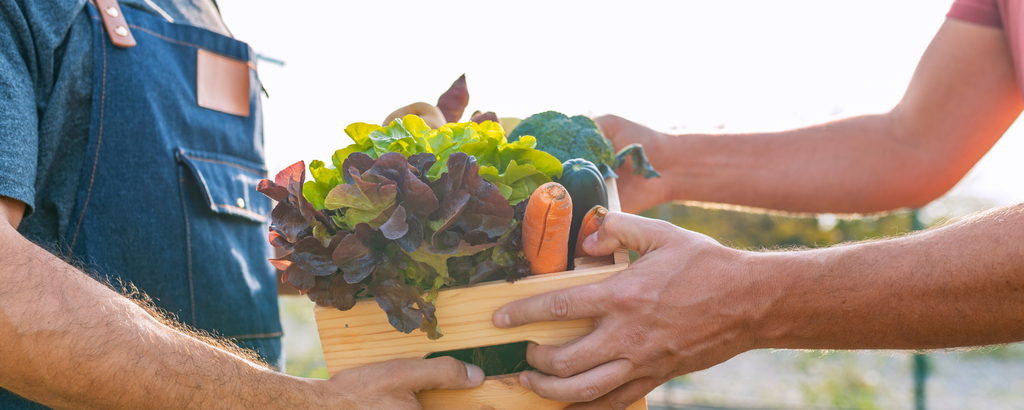In recent years, there has been a growing trend among homeowners in suburban areas: suburban homesteading. No longer confined to rural regions, homesteading has found its place in the heart of suburbia, as families seek to embrace a more self-sufficient and sustainable lifestyle while still enjoying the conveniences of suburban living.
What exactly is suburban homesteading?
At its core, it’s about reconnecting with the land, growing your own food, raising animals, and embracing a simpler way of life, all within the confines of a suburban neighborhood. It’s about transforming your backyard into a productive oasis and reducing your reliance on store-bought goods.

One of the key principles of suburban homesteading is food production. Many suburban homesteaders utilize their backyard space to grow fruits, vegetables, and herbs. With raised beds, container gardens, and vertical gardening techniques, even small yards can yield a bountiful harvest. From tomatoes and peppers to lettuce and kale, there’s a wide variety of crops that thrive in suburban settings.
But suburban homesteading goes beyond just fruits and vegetables. It also encompasses raising animals for food, such as chickens for eggs and meat, rabbits for meat, or even goats for milk. Many suburbs allow for small-scale animal husbandry, and with proper care and management, these animals can provide a sustainable source of food for your family.

In addition to food production, suburban homesteading often includes other aspects of self-sufficiency, such as composting, rainwater harvesting, and renewable energy generation. Composting kitchen scraps and yard waste not only reduces waste sent to landfills but also produces nutrient-rich soil for your garden. Similarly, harvesting rainwater can help reduce water consumption and provide irrigation for your plants. And with advancements in solar technology, many suburban homesteaders are generating their own electricity, further reducing their dependence on the grid.
But perhaps the most rewarding aspect of suburban homesteading is the sense of connection—to the land, to your food, and to your community. Tending to a garden or caring for animals fosters a deeper appreciation for the natural world and the cycles of life. And sharing the fruits of your labor with friends and neighbors can strengthen bonds and build community spirit.

Of course, suburban homesteading isn’t without its challenges. Zoning regulations, homeowner association rules, and neighborly considerations must all be taken into account. But with creativity, resourcefulness, and a willingness to collaborate, many suburban homesteaders have found ways to overcome these obstacles and create thriving homesteads right in their own backyard.
Tips for Suburban Homesteading
1. Start Small:
If you’re new to homesteading, it’s best to start small and gradually expand your operations as you gain experience. Begin with a small garden plot or a few containers on your patio, and gradually add more crops and animals as you become more comfortable with the process.
 2. Know Your Zoning Laws:
2. Know Your Zoning Laws:
Before you embark on your homesteading journey, familiarize yourself with the zoning laws and regulations in your area. Some suburbs have restrictions on the types of animals you can keep or the structures you can build, so be sure to do your research and obtain any necessary permits before you start.

3. Maximize Space:
In suburban areas where space may be limited, maximizing the use of available space is key. Consider vertical gardening techniques, such as trellises and hanging baskets, to make the most of your vertical space. You can also utilize raised beds or square-foot gardening methods to maximize your growing area.
 4. Choose Low-Maintenance Crops:
4. Choose Low-Maintenance Crops:
When selecting crops for your suburban homestead, opt for varieties that are well-suited to your climate and require minimal maintenance. Look for disease-resistant and drought-tolerant varieties, as well as crops that have a long harvest period to maximize your yield.
5. Incorporate Permaculture Principles:
Permaculture is a design philosophy that seeks to mimic the patterns and relationships found in natural ecosystems. By incorporating permaculture principles into your suburban homestead, such as companion planting, crop rotation, and mulching, you can create a more sustainable and resilient garden ecosystem.
 6. Embrace DIY Projects:
6. Embrace DIY Projects:
One of the joys of homesteading is the opportunity to get creative and build things with your own hands. From constructing raised beds and chicken coops to building rainwater harvesting systems and compost bins, there are plenty of DIY projects that can help you create a more self-sufficient homestead.
7. Connect with Your Community:
Homesteading doesn’t have to be a solitary endeavor. Reach out to other homesteaders in your area, join online forums and social media groups, and participate in local gardening clubs or community gardens. Sharing knowledge, resources, and experiences with others can enrich your homesteading journey and build a sense of community.
 8. Practice Patience and Perseverance:
8. Practice Patience and Perseverance:
Homesteading is a journey, not a destination, and it requires patience, perseverance, and a willingness to learn from both successes and failures. Don’t be discouraged by setbacks or challenges along the way—instead, use them as opportunities for growth and improvement.
9. Prioritize Sustainability:
‘
In all your homesteading endeavors, prioritize sustainability and environmental stewardship. Choose organic gardening practices, use natural pest control methods, and minimize your use of synthetic fertilizers and pesticides. By caring for the land and the environment, you can create a more sustainable and resilient homestead for future generations.
 10. Enjoy the Process:
10. Enjoy the Process:
Above all, remember to enjoy the process of suburban homesteading. Take time to savor the sights, sounds, and smells of your garden, and celebrate the small victories along the way. Whether it’s harvesting your first ripe tomato or gathering fresh eggs from your backyard chickens, each moment is a reminder of the joys and rewards of homesteading in the suburbs.
These tips can help you get started on your suburban homesteading journey and make the most of your backyard space. By embracing self-sufficiency, sustainability, and community connection, you can create a thriving suburban homestead that nourishes both body and soul.
Suburban homesteading offers a pathway to greater self-sufficiency, sustainability, and connection in the suburban landscape. By embracing practices such as food production, animal husbandry, and renewable energy generation, suburban homesteaders can create a more resilient and fulfilling way of life for themselves and their families, all while preserving the charm and character of suburban neighborhoods. So whether you’re a seasoned gardener or a novice homesteader, consider taking the leap into suburban homesteading and reap the rewards of a simpler, more sustainable lifestyle.

